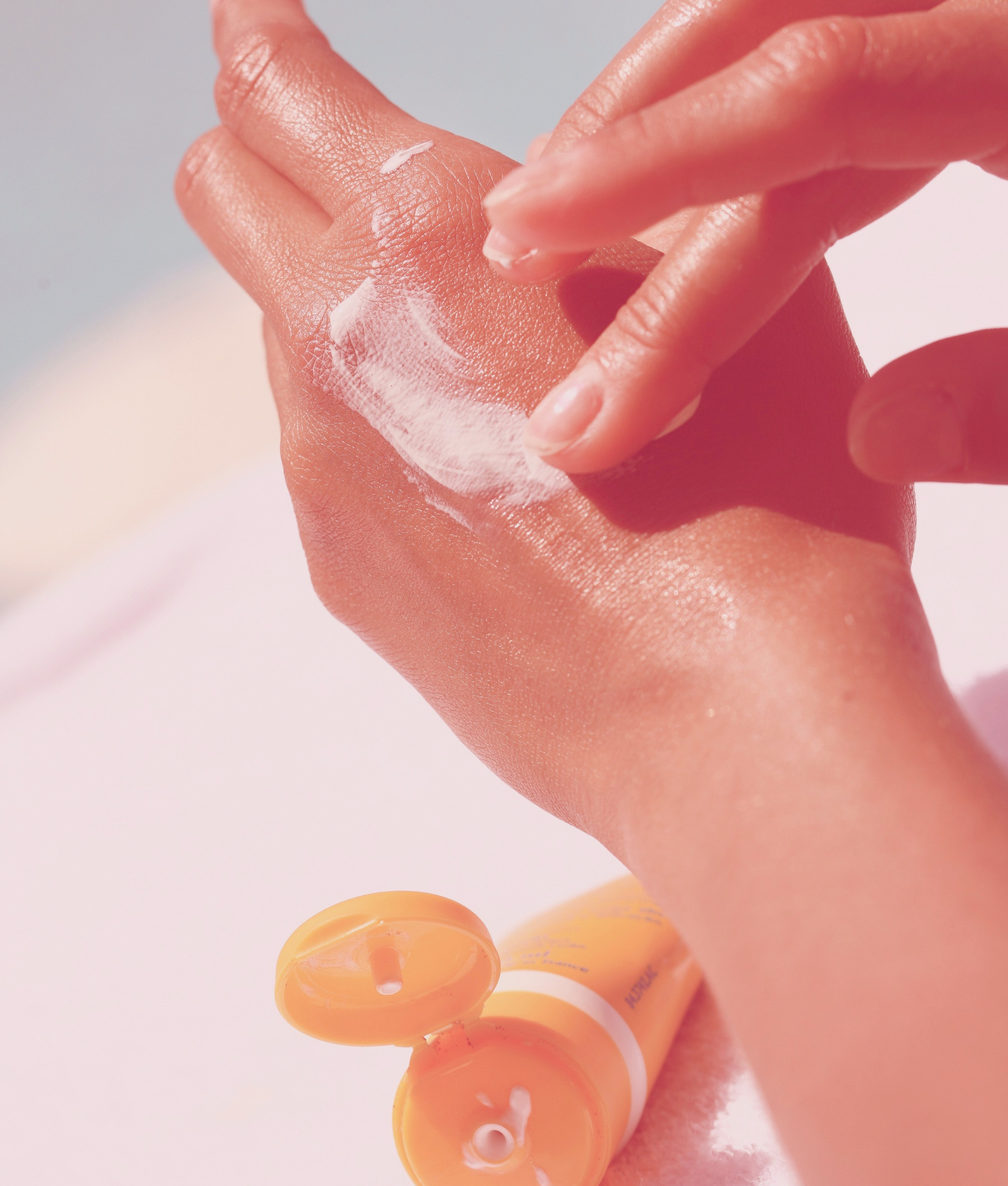The largest organ of the body is our skin, and one of its primary functions is to protect us against environmental damage and repair damaged skin cells. The skincare industry has thousands of products on the shelves, but one of the most researched ingredients that has shown to treat and prevent skin damage is Vitamin C. With so many different Vitamin C on the market, how do you know which one to buy? Here, I have narrowed down what to look for when choosing your own Vitamin C product; from choosing the form of Vitamin C (there’s several kinds!), the packaging, storage, and when to properly apply it.
But first, a quick summary as to what exactly is vitamin C, its importance, and why it’s effective in skincare.
What is Vitamin C and why is it important in skincare?
Vitamin C is a powerful antioxidant that helps neutralize free radicals. Free radicals are the molecules responsible for damaging our skin. They are highly reactive molecules that have an unpaired valence electron. The way it damages our skin is that it basically “steals” an electron from molecules in our skin. When this happens, it damages our skin’s DNA, which can cause fine lines, wrinkles, overall aging, and even skin cancer. This accumulation of free radical damage over time is called the free radical theory of aging. Vitamin C fights against environmental stressors such as air pollution and UV damage.
Vitamin C works best when ingested and used topically. Most animals can produce its own Vitamin C, humans however cannot make its own nor store it. Humans must ingest Vitamin C for survival. A lack of Vitamin C can cause scurvy, a disease that was quite common in sailors long ago who did not have access to fresh fruits during their long journeys.
When ingested, Vitamin C can help boost immunity and treat cell damage within the body. When used topically, Vitamin C can help with collagen production and improve your overall complexion. Due to its high acidity, it also helps with the skin’s regeneration process which repairs any damaged skin cells. Vitamin C is well known to help fade hyper-pigmentation and brighten your skin.
So now that you understand why Vitamin C is so important for our bodies, here are some tips on how to choose the best Vitamin C product for yourself.
Tip #1: Choosing the best form of Vitamin C
If you look take a close look at the ingredients list found in the back of a product, you may notice that you will never see “Vitamin C” listed. This is because the word “vitamin” cannot be used by companies due to labeling laws. Because of this, companies list the form of the Vitamin C that is being used.
Vitamin C comes in many derivatives. It is important to choose the right one depending on your type of skin and any skin conditions that you may have. Choosing the wrong one can actually irritate your skin. Some of the different forms of Vitamin C include:
– Ascorbic Acid or L-Ascorbic Acid:
– Tetrahexyldecyl Ascorbate (THDA) which is also denoted Ascorbyl Tetraisopalmitate
– Magnesium Ascorbyl Phosphate (MAP)
– Ascorbyl Palmitate
… and many more.
As a rule of thumb, look for “ascor”, “ascorbyl” or “ascorbate” in the ingredients list when searching for Vitamin C.
When choosing a Vitamin C, your skin type and condition is important to keep in mind. L-Ascorbic Acid (Ascorbic Acid) is considered to be the most effective form (and the most common form of Vitamin C on the market) since it has consistently shown to be the most effective at penetrating the skin barrier. It is also the most irritating and least stable form of Vitamin C. This form can be tolerated by people with normal skin types who’s skin barrier isn’t easily compromised.
For individuals with sensitive skin, it is best to use a form of Vitamin C that is gentle. Tetrahexyldecyl Ascorbate has been found to be less irritating than other forms and is generally tolerated by all skin types.
A good way to start is to stick with a low concentration and start with L-Ascorbic acid. Then, you can slowly experiment with higher concentrations and different forms. If your skin begins to feel irritated, take a break and switch to a lower concentration or a more gentle form of Vitamin C.
Tip #2: How to choose from the different kinds of Vitamin C and the concentration
Vitamin C comes in different kinds of textures. There are serums, moisturizers, creams, and oils. Research has shown that serums are more efficient at penetrating the skin. More recently, powder forms of Vitamin C have been created. Powder is more stable which means that it is more potent than liquid versions. The powder is mixed into your favorite essence or serum, and then applied to your face. One of the downsides of powders is that most are made using L-Ascorbic Acid. Due to its acidity, the serum or essence being used for mixture should not be acidic so as to prevent any skin irritation. An essence with a neutral pH works best in conjunction with the powder form of Vitamin C. Do not mix the powder with acids such as AHA or BHA.
Another important factor to keep in mind is the concentration of the Vitamin C. Anything above 8% is most effective in improving the appearance of skin hyper-pigmentation and overall complexion. However, people with sensitive skin should stick with concentrations of 5 – 8% to reduce irritation. Most individuals can start at 10% and work their way up to 20%. Anything over 20% however does not increase its benefit and may likely lead to skin irritation. The best (and safest!) way to choose is to start with a concentration of 10% and then either increase or decrease the concentration depending on how your skin tolerates it.
Tip #3: Keep an eye on packaging and storage
Although Vitamin C is an amazing antioxidant with dozens of skincare benefits, it is important to know that Vitamin C is very unstable. This causes the packaging process to be incredibly tricky. Vitamin C is a water-soluble vitamin, meaning that it oxidizes very easily. Vitamin C can easily oxidize when it is exposed to oxygen, light, water, and heat. To see how quickly something can oxidize, watch my Vitamin C Oxidation Experiment video where I show how fast a sliced apple can turn brown.
Vitamin C turns a dark orange, tan, or brown color when it oxidizes. There are some exceptions to this, however the manufacturer will state upfront if the Vitamin C is expected to change color slightly. If your Vitamin C turns into a dark color, throw it out. This is because once Vitamin C oxidizes, it actually creates free radicals in your skin which will harm it. Some companies may purposely dye the serums into a yellow/orange color to make it more difficult to tell when the product has oxidized. Just be mindful of the color of the serum as well as the period-after-opening (PAO) symbol. This symbol tells you how long the product is good for after opening. It is usually found in the back of a product and it is a picture of a small jar with a lid and a number and letter on it. The number and letter will tell you how long you can use this product before it expires. For example, 12M stands for 12 months.

It is important to choose a product that comes in a dark or opaque container to prevent exposure to light, and preferably in a tube or airtight container that has a pump to prevent exposure to oxygen. Stay away from Vitamin C that is packaged in clear bottles! Clear bottles allow light to penetrate the product, causing it to breakdown easily. Some high concentrations of Vitamin C (such as Ascorbic Acid/L-Ascorbic Acid) must be packaged in glass bottles to prevent to vitamin from reacting with plastic material. However, it should still be packaged in a dark glass bottle to prevent oxidation.
It is best to store Vitamin C in a dry, cool area and away from light. Some companies even advise to store their products in the refrigerator to improve stability and reduce oxidation. There are new technologies being created everyday to ensure that the most potent and freshest form of Vitamin C is being packaged. There are oil-soluble forms, encapsulated, ampoules, and even some dual-chambered bottles that mix the ingredients as you pump to keep it fresh.
Tip #4: The best time to apply
Preferably before and after going outside and being exposed to the sun. If you can only apply once a day, apply in the morning. This is to help reduce UV cell damage, damage from air pollution, and redness due to the vitamin’s free radical protection. Vitamin C cannot be wiped off easily from skin. This is because it has a reservoir effect, so you will be protected for hours after applying it on your skin.
When using Vitamin C, apply it underneath your moisturizers, creams, and sunscreen. This makes it easier for it to penetrate your skin.
Tip #5: Combine Vitamin C with other antioxidants!
Research has shown that the effectiveness of Vitamin C increases when it is combined with other antioxidants such as Vitamin E and Ferulic Acid. This is because certain antioxidants are synergistic. In other words, they increase the efficacy of one another, can increase skin penetration, and can last longer in the body. This is why many Vitamin C products on the market usually have a combination of Vitamin C with other vitamins and acids.
I hope these tips come in handy when you are choosing your own Vitamin C!
Stay humble,
Ivy ~
Resources:
https://www.ncbi.nlm.nih.gov/pubmed/28805671










